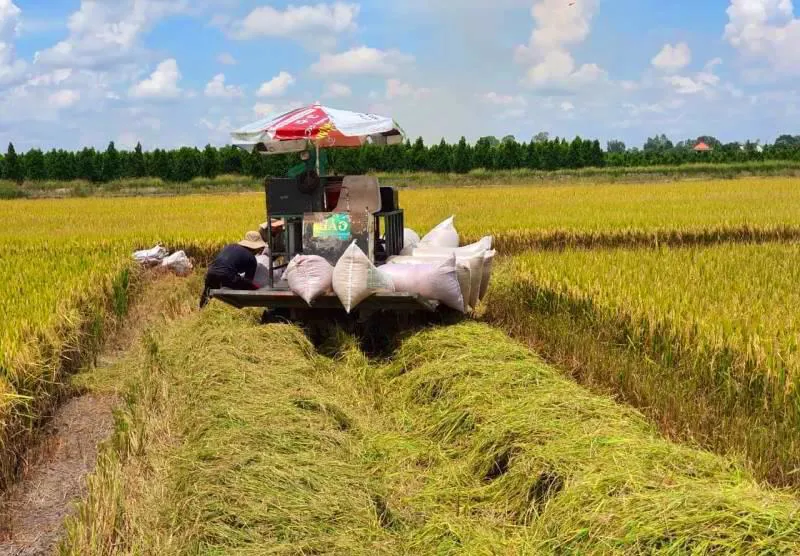Vietnam’s rice in high demand amid global shortage
Over eight months, the country exported nearly six million tons of rice, generating revenue of nearly US$3.2 billion, up 21% and 35% year-on-year, respectively.
Over the past eight months, countries in Asia, the Middle East, and West Africa have stepped up their efforts to buy about six million tons of Vietnamese rice, even though the prices were significantly high.
| Rice harvesting in the Mekong Delta. Photo: Giang Lam/The Hanoi Times |
The latest preliminary data from the General Department of Vietnam Customs indicates that Vietnam sold 921,000 tons of rice in August, generating $546 million in revenue. This was a significant increase of 40% in volume and 51% in value compared to July.
The country exported nearly six million tons of rice during the eight-month period, resulting in a turnover of nearly US$3.2 billion, representing an increase of 21% in volume and 35% in value.
The Philippines remained the largest customer, with purchases totaling $1.23 billion worth of rice, an increase of 16% and accounting for 38.9% of the total export turnover for this product. It was followed by China, with rice imports worth $452 million, reflecting a significant increase of 67.9% compared to the same period in 2023.
In addition to these two countries, Indonesia has experienced remarkable growth, rising from the 8th position to the top three nations purchasing Vietnamese rice. In the past eight months, Indonesia imported 718,266 tons of rice, valued at $361.2 million, marking an astonishing increase of 1,505%.
According to the Vietnam Food Association (VFA), various countries worldwide have increased their imports of Vietnamese rice due to the shortage in the global market. Notably, rice exports have surged in the past three months, especially after India banned rice exports from July 20. Just one week after India's ban, the UAE and Russia announced a halt to overseas rice sales. Consequently, numerous countries have turned to Vietnam to place orders, causing export rice prices to rise.
Furthermore, adverse weather conditions, including droughts and floods, have adversely affected rice production in many countries across the globe.
At the beginning of the year, Indonesia had planned to import two million tons of rice to ensure national food security and cope with the El Niño phenomenon. The country recently revised its full-year plan to 2.4 million tons. According to the country's customs report, they had imported approximately 1.4 million tons of rice by the end of July. Senegal, Poland, Ghana, and Gabon have also seen an uptick in their purchases of Vietnamese rice, primarily due to their supply shortages from India and reduced domestic production as a result of drought.
In the case of Laos, sticky rice constitutes a significant 80% of its total rice output, leading to an increase in imports of white and fragrant rice to supplement its needs. Additionally, many Vietnamese businesses use Laos' highway as a conduit to export rice to China.
A Ministry of Industry and Trade forecast suggested Vietnam's rice exports are expected to continue experiencing growth in the last four months of this year, driven by a surge in orders from several emerging markets.











